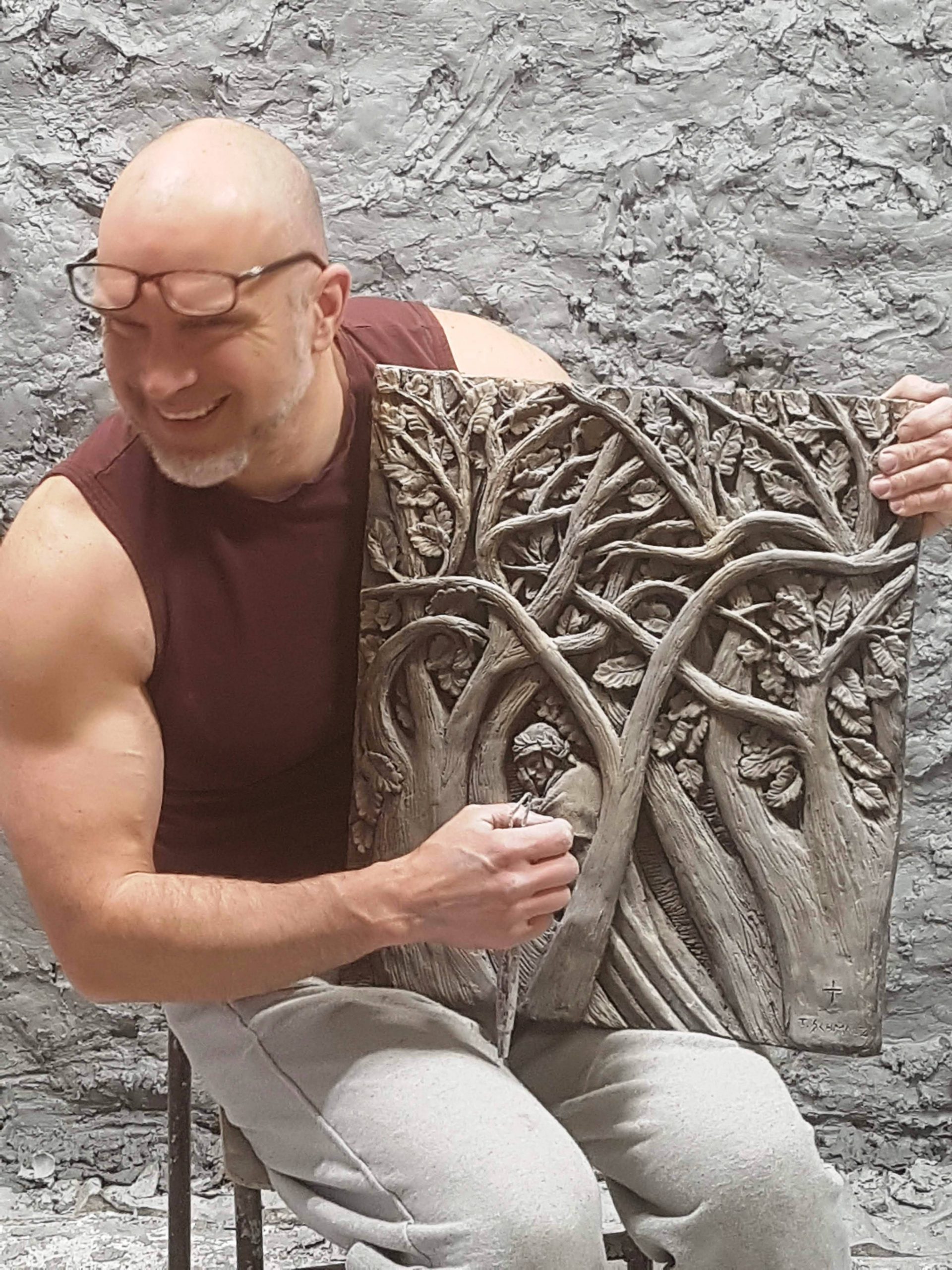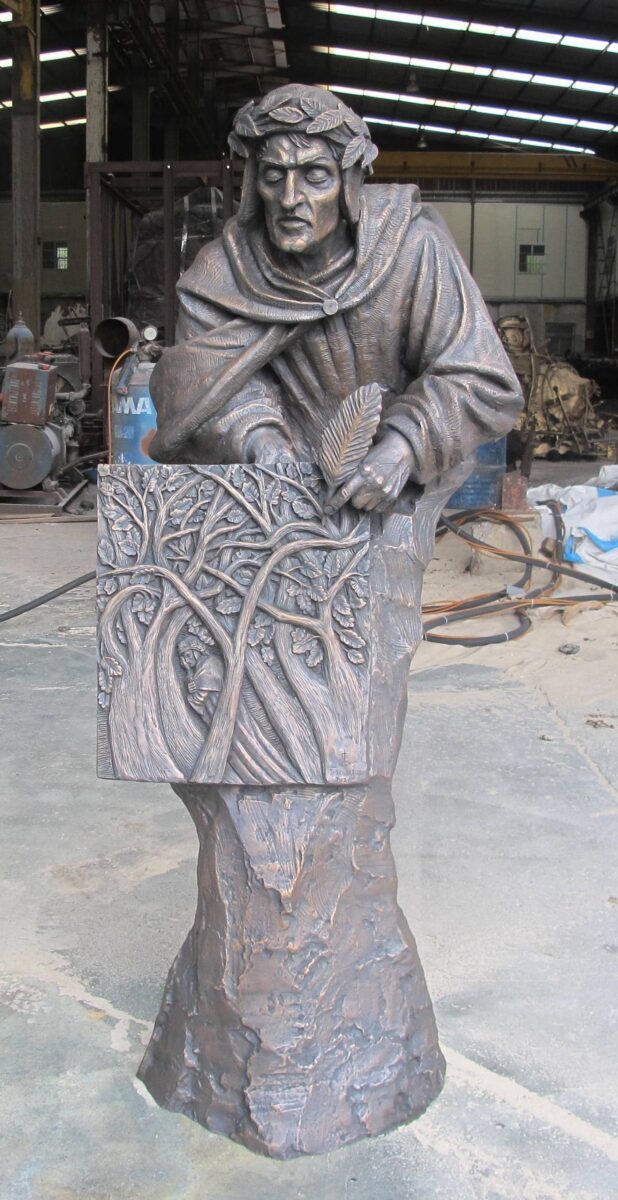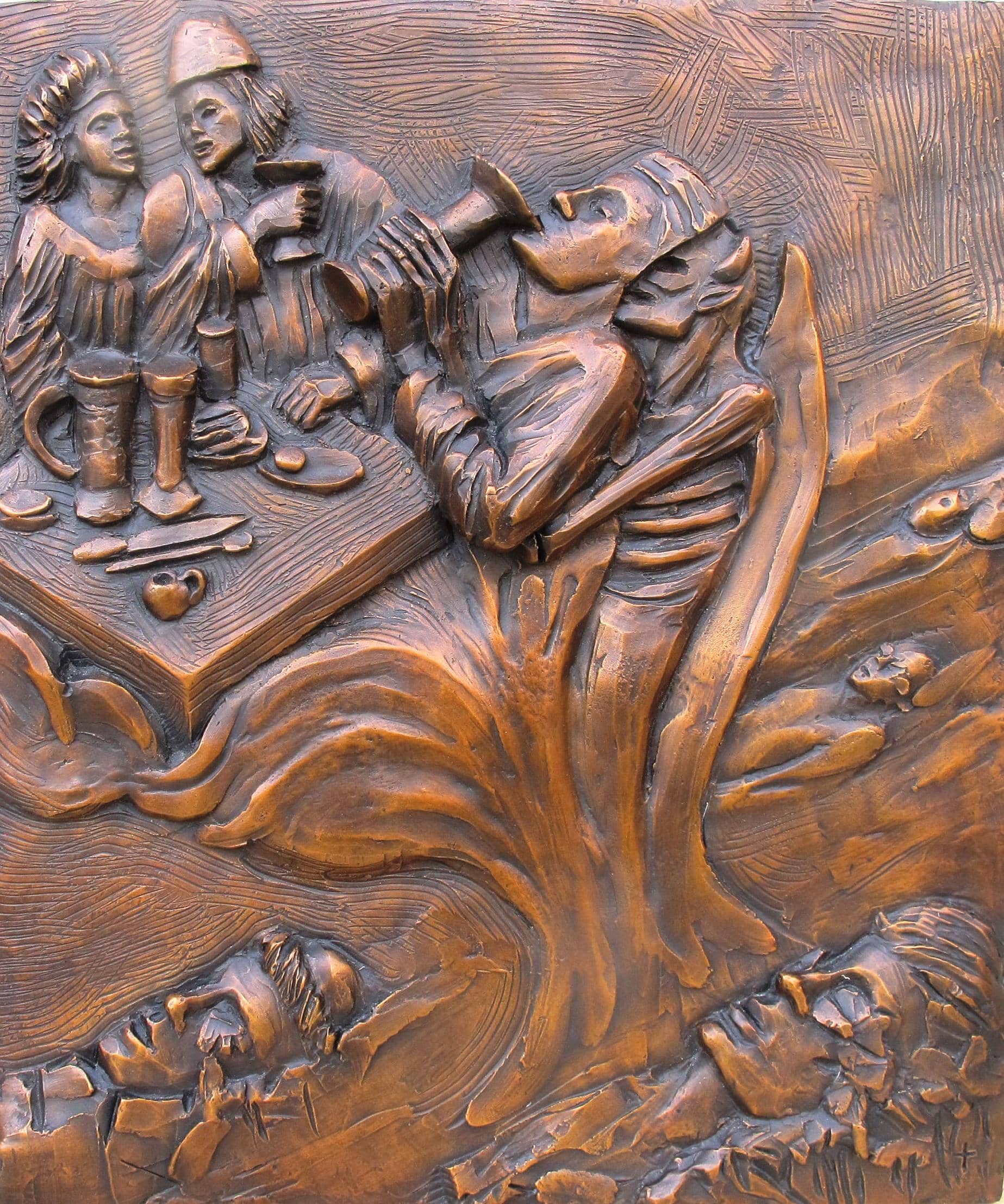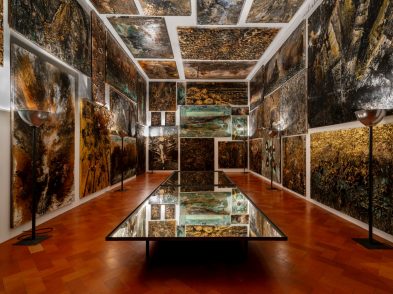Canadian sculptor Timothy Schmalz is the creative force behind an engaging and dramatic upcoming exhibition at the Badia Fiorentina. The 100 cantos of Dante Alighieri’s much-loved masterpiece, the Divine Comedy, will be interpreted in bronze sculptures, 30 of which will be scattered throughout the historic monastery, creating a visual journey through the literary work. The first canto sculpture will be presented to Pope Francis in Rome on September 8, with Cambridge University and St. Michael’s College in central Toronto also to receive casts of the works, the originals of which will remain in Italy. On September 14, the date Dante is believed to have died in 1321, Schmalz will complete the 100th sculpture, Canto 33 of Paradise, in person at the Badia, with everyone welcome to watch. Here, artist Timothy Schmalz reveals more.

Artist Timothy Schmalz
“It starts with a portrait of Dante, featuring his head and torso, as a kind of presentation. Dante is writing the first canto and he is presenting his gift to the world. The format of the pieces is relatively small: page-like, two feet tall and one foot wide. The benefit of this is that they are intimate enough that people can read them visually, almost like a page, and also when you are dealing with 100 sculptures, that size is ideal.”
This project comes off the back of Schmalz’s poignant installation at St. Peter’s Square in 2019, consisting of 140 migrants blended within one sculpture, reaching the remarkable size of 20 feet.

Bronze sculpture of Dante Alighieri
“After the project, I began to desire to work on another epic project and I have always loved Dante, ever since I started sculpting. Dante becomes an entrance for so many people, not only to spirituality, but also to art. Being this very important figure in culture, I had a problem with how Dante was represented over the years in that the Inferno is constantly emphasised. I wanted to give equal representation to Paradise as well as to Purgatory. It’s a Herculean project, but I didn’t want the figures to be stuck in hell. I also wanted to make sure that it was in a language that was very legible. The Divine Comedy has been criticized for being very opaque and filled with footnotes. I did not want any footnotes needed for this sculpture project. Dante wrote this in the vulgar, the common Italian, so that everyone could read it. The international language now is very much the visual, so on the occasion of the 700th anniversary, I wanted to stay true to the text, while also creating something exciting and powerful. These are wonderful locations at a time when we need some celebration. This is an opportunity to not only celebrate Dante, but also the treasures of European culture.”

The works will be on display from September at the Badia Fiorentina.








